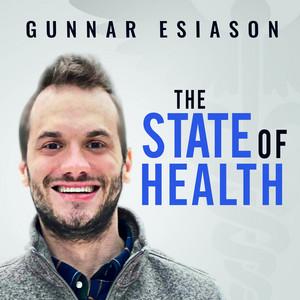To address this, you want to get some qualitative feedback from those who represent certain segments of your target market, namely people who are more advanced in age (your interface might be a challenge for them), and those who might have additional disabilities that highlight accessibility and usability challenges with use of your product (such as macular degeneration or glaucoma).
You recognize that this will take some time and resources, but are reminded of our previous post that you will pay now or pay later, and know it is a worthy investment to make now. It would be a shame to sink everyone’s time and $50 million of investment into developing a product, only to find that 20% of your target population cannot read the notifications it delivers, and quit the program before they reap the benefits. Your business suffers, and patients don’t get the products they need to improve their health. It’s a lose-lose.Now that we see how important this work is, let’s frame the business decision you are trying to make:
Decision: We need to understand the unmet needs of people with type 2 diabetes who are advanced in age (65+) along with others who have comorbidities that are common in T2D, so we can understand the drivers and barriers of adoption and engagement with our product.
So how would a researcher go about trying to get clarity on this topic?
The research question
Let’s break the statement down and work backwards to a research question.The unmet needs of people with type 2 diabetes is a wide area, but let’s structure it so that your team can brainstorm on its constituent parts. Let’s take a stab at that below.
(I’d encourage you to just open a blank document and write out some of your free-form thoughts as you read this. At this point, your document might look something like this:)
Decision: We need to understand the space of unmet needs of people with type 2 diabetes who are advanced in age (65+) along with those who have disabilities that are common in T2D such as glaucoma, so we can understand the drivers and barriers of adoption and engagement with our product.
Need to define:
- Unmet needs of T2D patients in general
- Variance in home life
- Financial challenges
- Patterns around prescription of current interventions
- Other factors in their environment
- Focus on:
- Age 65+ population
- Those with comorbidities where our mobile interface could present challenges, e.g. macular degeneration, glaucoma
Now that you and your team have a shared understanding of the problem, you can turn these into research questions.
It’s important to note that research questions are global questions that your team is trying to answer and are not interchangeable with what you will actually ask participants (we’ll address this later when we talk about building discussion guides). Research questions are what you hope the patient insights research will help answer.
In general, a project should have around 1-6 research questions. If you have lots of questions that patients could help answer, first, a high five to you for seeing that patients have a lot to contribute, and second, consider breaking the research questions up into different thematic projects.
Here are some research questions that may arise from the example we have been discussing::
Unmet needs of T2D patients in general
- What challenges to T2D patients in our target population face at home, both specific to accessing our product, and in general?
- What are the potential financial challenges to accessing our DTx in this population?
How have T2D patients been managing these challenges without pharmacological intervention in the past?
- Assuming that we can address hurdles to financial access for this population through Medicare, what usability and accessibility challenges might they face?
Those with comorbidities that can present challenges with our mobile interface, e.g. macular degeneration, glaucoma
- What do users with different visual abilities experience when they interact with specific user flows of our DTx?
- What accessibility initiatives, if any, should we prioritize in patients who have vision loss?
Research objectives
So far we’ve gone through and identified the business decisions impacted by patient insights, and crafted the research questions whose answers can help inform them. We are now ready to clearly articulate the objectives of the patient insights research.
Take a look at the research questions under each area of decision your team is trying to make. Try and think about the actions you need to take to answer these questions (learning, interviewing, answering, etc), and the actions you will take once you learn the answers to the questions. Then write them out in one statement encompassing the actions and questions together.
One version of a research objective could look like this:
The objective of this research is to learn what a segment of our target population—those who are 65+, and those with glaucoma / macular degeneration—experience when they use our DTx app, so that we can understand barriers to adoption and engagement, and can implement mitigation strategies prior to product launch.
With this objective clearly laid out, you are armed and ready to respond to other teams, managers, or executives who ask why you are investing time and resources into patient insights research. You’re doing the work that will help you answer the research questions which will help you make the best decisions for your company.
What comes next
You may have noticed that we haven’t said anything yet about how we’re going to do the research. You won’t see the words “survey” or “interview” in the research questions or objectives, because we are first trying to get clarity on what we’re doing and why before we pick a methodology. We’ll cover picking the right methodology in our next installment.
Thanks for reading!
——————————————————
About Us
Jahed Momand is VP of Product & Marketing at Savvy Cooperative, and previously led patient-focused research groups at digital health startups such as Conversa Health and ZoomCare.
Savvy Cooperative helps the healthcare industry create patient-centered products and solutions by providing a marketplace for patient insights. Pharma and startups alike can connect directly with patients to participate in clinical, UX, and market research. Savvy’s unique co-op model leverages its members’ networks to quickly recruit diverse patients, and pays patients for sharing their insights! Savvy’s award-winning co-op has been featured in FastCompany, TechCrunch, The Boston Globe, and named one of the 50 Most Daring Entrepreneurs by Entrepreneur Magazine.
.png?width=300&height=69&name=SavvyCoop_HorizontalLogo_LargeFormat%20(1).png)


